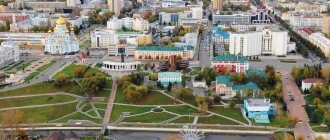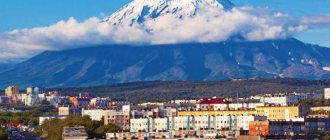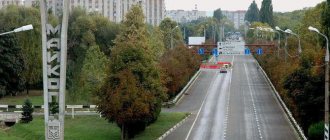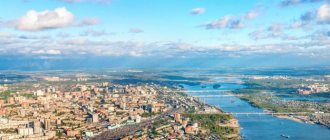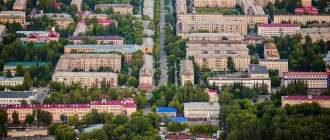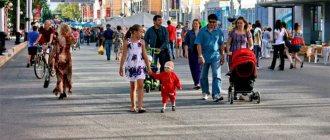Interesting pages of history
How did Gatchina appear? The history of the city is unique; it is connected with the reign of Catherine II. It was during that period that a huge estate was located here - the Gatchina Manor. The Empress erected the Great Gatchina Palace. In 1783, Grand Duke Pavel Petrovich, the future Russian Emperor, became the owner of this luxurious mansion. It was under him that the original park buildings appeared here, and large-scale work was carried out to rebuild the palace. By decree of Pavel Petrovich in 1796, Gatchina received the status of a city.
Catherine II and Grigory Orlov
In 1765, Catherine II gave the Gatchina estate to her Count Grigory Orlov. Thus, the empress wanted to thank her favorite for his faithful service. After all, it was thanks to the coup he organized that she ascended the throne.
The count zealously set about organizing the estate. On his initiative, the architect Antonio Rinaldi was invited from Italy to design the palace. The result of the work of the Italian master and many years of construction was the famous Gatchina Palace, which combined an ascetic appearance and exquisite interior decoration.
On his estate, Grigory Orlov engaged in his favorite game hunting and received guests, including the Empress. But fate did not allow the count to live long in the magnificent residence. He died two years after construction was completed.
Appearance of the name
How did such an unusual name – Gatchina – come about? A description of the history of the city indicates that the village of Khotchino was previously located here. The first mention of its existence dates back to 1500, found in the Novgorod scribe book. Further, the settlement is listed in Swedish books of 1618-1623 as the village of Hotzino by, located in the Dyagilinsky churchyard. There is a version according to which such a toponym arose from the shortened form “hot” of one of the personal ancient Russian names (Khotina, Khotimir). The second version considers the word “hot” as a variation of the ancient Finnish word “hatsha” (an area where the forest was burned down along the arable land).
There is another version, according to which on the site of Gatchina there was once a temple of the pagan goddess Khochena, hence the name of the village of Khotchino.
By the middle of the 17th century, instead of the dull consonant “x”, the letter “g” appeared in the name, as a result the village began to be called Gotchino, and then Gotchinskaya manor.
By the end of the same century, the name “Gottino” finally passed into its modern form. Emperor Alexander III often called this place “dear Gatchino.”
In 1923, Gatchina was renamed. The Leningrad region in those days underwent serious transformations, for example, Gatchina turned into Trotsk. Lev Davydovich Trotsky repelled the Krasnov-Kerensky campaign in 1917, and also became an active participant in the defense of Petrograd in 1919. It was for these merits that the decision was made to encourage Trotsky, and as a pleasant gift Gatchina was renamed Trotsk.
After Trotsky was expelled from the USSR (1929), the city began to be called Krasnogvardeysk. During the Great Patriotic War (1942), the fascist occupiers named it Lindemanstadt in honor of the commander of the 18th Army Lindemann. This name was not accepted by the state authorities of the USSR. In 1944, the city was returned to its historical name - Gatchina. The population knows the history of their small homeland and is proud that every corner of this amazing place is filled with important historical moments for the country.
Origin of the word gatchina
As for the name itself, the first version is that it comes from the word gat, which can be translated as:
- important, kind or decorous;
- a path laid through a marshy place.
The second interpretation is very suitable, since in fact there was a similar causeway between the two lakes Black and White. Another version says that Khotchino is consonant with the male name Khotin (that is, the first, “wanted” child in the family).
The pride of the townspeople
What else is Gatchina proud of? The population of this city knows that in 2015 their small homeland was awarded the honorary title “city of military glory.” During the Great Patriotic War, this territory was occupied by German occupiers.
It was at this time that the palace and park ensemble of Gatchina was seriously destroyed. After the war, restoration work was carried out in the city, new residential areas appeared, an institute of nuclear physics was created, and large industrial enterprises began to function.
The convenient geographical location of Gatchina makes this city a major industrial center of the Leningrad region. In 1985, after serious restoration work, the Gatchina Palace opened some halls to the public.
In 1999, Gatchina became the winner of the All-Russian competition aimed at identifying the most comfortable Russian city with a population of up to one hundred thousand. The population speaks with pride about such a high achievement.
Until 2010, the city had the status of a historical settlement. However, according to the order of the Ministry of Culture of the Russian Federation, Gatchina is currently deprived of this status. The city's population still considers their city a place with a unique history. Here they try to treat all cultural and architectural objects with care.
Close
How to spend your weekend? In the Gatchina Museum-Reserve!
Many St. Petersburg residents often think about how to spend the weekend, so long-awaited after a busy week. In the busy rhythm of business life and the cycle of everyday chores, you want to find a place where you can spend a weekend, truly resting your soul. The search for alternatives to a pleasant and useful vacation occurs even on the Internet. “Where to go with a child,” “how to spend a weekend in St. Petersburg” are the most relevant requests in our city at the end of the working week.
When thinking about where to go in St. Petersburg, you can choose Gatchina Park, where natural beauty is surprisingly combined with man-made art. Here you can either spend a weekend with the whole family or take a walk in the warm company of friends. Moreover, such a walk will be filled with meaning and harmony: in Gatchina Park, every detail serves to restore strength and gain mental balance.
When choosing where to go on vacation with your child , be sure to take into account the possibilities of this open-air museum. It is simply impossible to get bored here, as is usually the case with children in historically significant places. After all, the main exhibits of this museum-reserve are beautiful nature and clean air, which are so lacking in the city.
In addition, even in winter, modern Gatchina offers many services for an exciting and comfortable pastime, including excursions through the newly opened halls of the palace, classical music concerts, family visiting days and much more that will be of interest to both adults and children . After all, visiting such places is very important in the development of a child.
The tradition of creating conditions for “relaxation that heals the soul and body” in Gatchina Park was established back in the 18th century , when the aesthetics of the fashionable English landscape style conquered St. Petersburg. Guests of Paul the First, who took possession of Gatchina after Count Orlov, also loved to spend weekends among elegantly planted trees, picturesque islands and carved bridges over mirror ponds. To this day, magnificent examples of European architecture have been preserved here, which managed to reveal the beauty of northern nature. First of all, it is worth visiting the Gatchina Palace, whose graceful forms resemble a medieval castle. Under the “palace-castle”, which captivates the imagination of children and adults, there is an underground passage, equipped during the construction of the building. Here is the Octagonal Well and the amazing Echo Grotto, where going with a child will be simply unforgettable: such a walk will resemble a trip to an ancient fairy tale.
Leads an underground passage to Silver Lake. From the shores of the lake, as well as from many other points - this is how the park is designed - a magnificent view opens up, more than once captured in the paintings of Russian artists. Gatchina is a superbly landscaped complex with many beautiful romantic corners, so well suited for meetings and pleasant communication. When thinking about where to go with a girl, take into account these unique places, the atmosphere of which has been carefully preserved to this day. It has been noticed that even the climate here is different from St. Petersburg: it has a more beneficial effect on the respiratory and nervous systems.
The park is located in the south-west direction from St. Petersburg. Since Gatchina is an important transport hub, it is convenient to get here by rail. The 45-kilometer distance will be covered by electric trains departing from the Baltic Station. Any electric train passing through the Gatchina-Baltiyskaya or Gatchina-Varshavskaya stations will suit you. In addition, minibuses No. 100, 18 and 18-A depart here from the Moskovskaya metro station. Another road to Gatchina starts from St. Petersburg’s Victory Square and runs along Pulkovskoye, and then along Kievskoye Highway. One hour on the road - and the noise of the metropolis is left behind , and you find yourself “in the palms of forests and groves”, where you can spend a truly unforgettable weekend.
Ecology and climate
What climate is Gatchina characterized by? It is characterized by an Atlantic climate, with some continental features. Summer in the city can be quite hot, and winter is significantly colder than in St. Petersburg. In January, the average daily temperature is -8 °C; in July, it is estimated at +17 °C.
Considering that large industrial enterprises are located in the city, the level of air pollution exceeds standard indicators.
Gatchina time zone is UTC+3.
City population
The area of Gatchina is 28.7 km2. In terms of population, this city occupies a leading position in the Leningrad region. At the end of 2014, about one hundred thousand people lived here, and the population continues to grow. This population growth can, in particular, be explained by the fact that many residents of St. Petersburg prefer to purchase housing here. In Gatchina, the cost of apartments is significantly lower, so in the morning people leave for work in St. Petersburg, and in the evening they return to their convenient and comfortable apartments.
Can also be done by car
It’s very convenient and quick to get to Gatchina by car. From St. Petersburg you can get there by following one of two highways: Kievsky or Krasnoselsky. For this you will need only 60 minutes (unless, of course, there are traffic jams). And the distance from St. Petersburg to Gatchina will be approximately 48 kilometers.
On a note! But from the Ring Road (Ring Road) to Gatchina is only 30 kilometers.
Symbolism
The coat of arms of Gatchina was approved in 1980 by Decree of Paul I. In 1917 it was canceled, but since 1995 it is again considered the coat of arms of the municipal entity “city of Gatchina”.
The coat of arms of the city of Gatchina was approved by Paul on December 13, 1800. On November 10 (23), 1917, it was abolished, and since 1995 it has been used as the coat of arms of the municipal formation “city of Gatchina”. At the top of the shield, in a golden field, there is a symbol of Russian statehood - a double-headed eagle. It is black in color and has golden paws and beak. Red scarlet tongues are crowned with three emperor crowns. The average crown is large. The eagle holds a scepter and orb in its paws. On his chest is a silver Maltese cross under the crown of the Grand Sovereign Military Order of Malta. Above the cross there is a scarlet shield, which is encumbered with the gold monogram name of Emperor Paul I. Under the cross on a blue background the gold letter G is visible. The main colors of the coat of arms are:
- the azure background represents grandeur and softness;
- yellow tone is associated with generosity, justice, wealth;
- the scarlet color is symbolized with fearlessness, courage, courage;
- white background is associated with purity and innocence.
National composition
The predominant share of the population of this city are Russian people. That is why interethnic conflicts and problems are not typical for Gatchina. There are no migrant workers in this city; it is difficult to see people without a fixed place of residence (homeless people) here. A significant number of pensioners live in Gatchina, and there are also many young mothers with strollers leisurely strolling along the ancient streets of this beautiful city in the Leningrad region.
Where to eat in Gatchina
When visiting Gatchina in one day, you will have time to see the main attractions: the Great Gatchina Palace, the Palace Park and the Priory Palace.
If there is time left before departure and you decide to drink coffee or sit in a cafe, then feel free to head to Sobornaya Street. It is one of the oldest streets in the city and is currently a pedestrian zone.
Cathedral Street
Cathedral Street is a pedestrian zone
There are many restaurants and cafes on this street to suit every taste.
In Gatchina you can find a cafe or restaurant to suit every taste
If you have visited Gatchina, would you recommend this place to others?
Characteristics of the districts
From an administrative point of view, Gatchina is a single whole, but residents unofficially divide its territory into several large microdistricts: entrance, airfield, Khokhlovo, center, Marienburg.
This area is located at the entrance to the city from St. Petersburg, where Kyiv Highway smoothly turns into 25 Oktyabrya Street, the main thoroughfare of Gatchina. On the southern side, the area is limited by 7th Army Street, which is a conditional border from the central part of Gatchina. There are new residential complexes in the area, dominated by the 121-Gatchina series with nine-story panel buildings. The buildings are distinguished by high thermal insulation characteristics, the presence of loggias, and triple glazing. The area has excellent infrastructure, so many young families live here.
Aerodrome
This area of Gatchina is separated from the central part of the city by a railway track. It is located near the Baltic station of Gatchina. The name of this area was “inherited” from those distant times when the operating Aeroflot was located here. Among the main advantages of this area are the proximity of the station, public transport, including St. Petersburg routes.
